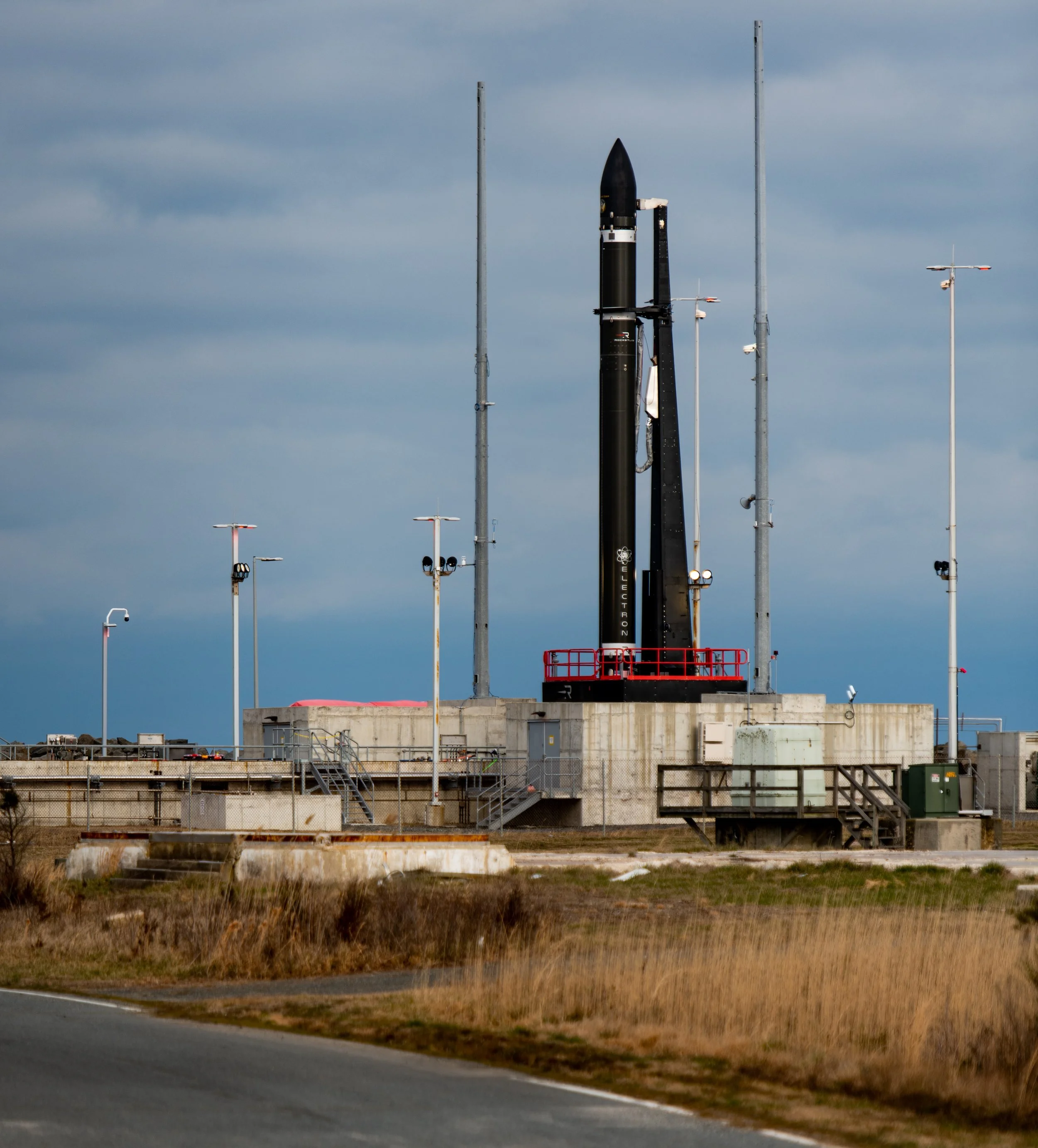Lifting Off: Rocket Lab bringing new launch capabilities to Virginia’s Eastern Shore
The Speakers:
Aaron Kuipers is director of the East Coast Test and Launch Operations for Rocket Lab USA. He joined Rocket Lab in 2018 and started building the launch site and team at Wallops Island to support the Electron rocket.
Kuipers began working as generator mechanic at Caterpillar. During that time, he completed his education at Arizona State University earning an Electrical Engineering degree and later receiving his Master’s in Systems Engineering.
Shortly after, he started working for Orbital Sciences on a missile defense program and then moved to Antares’ rocket program. In 2011, Kuipers moved to Wallops Island to support Antares’ launch operations and joined Virginia Spaceport Authority as Operations Manager in 2015 continuing support for Antares’ launches.
Sean Mulligan is the deputy executive director and chief operating officer of the Virginia Spaceport Authority. Mulligan works closely with the Authority's executive director, Executive Committee, and its Board of Directors to manage the organization, grow the business, and pursue the strategic goals of the authority.
Mulligan began his career at MARS as one of the original engineers to design, build, and test the Pad-0A launch facility for Northrop Grumman’s Antares rocket. He then served as the director of MARS from 2012 through 2021, overseeing a transformation and increase of Spaceport capability, and supporting 17 launch operations.
Mulligan has a bachelor’s degree in chemical engineering from the University of Delaware and an MBA from the University of Virginia’s Darden School of Business.
Tune in on Wednesday December 6 at noon to learn about how Rocket Lab is lifting off from Virginia’s Eastern Shore and how the Virginia Spaceport Authority is focused on bringing commercial spaceflight to the Mid-Atlantic Regional Spaceport (MARS) within NASA’s Wallops Flight Facility.
Virginia's Eastern Shore is emerging as a hub for aerospace activities, notably with the presence of the Virginia Spaceport Authority's Mid-Atlantic Regional Spaceport (MARS) and with Rocket Lab expanding its orbital vehicle launches from this location.
Rocket Lab, a California-based aerospace company, has launched three successful missions from its Launch Complex 2 at MARS since January. The company developed the Electron rocket, the world's most frequently launched small orbital vehicle, which has completed 41 missions since its inaugural launch in 2017, delivering a total of 171 satellites to space.
Rocket Lab also has selected Virginia’s Eastern Shore for the launch and manufacturing for its new reusable Neutron rocket. Neutron is the company’s next generation launch vehicle in development designed to lift 13-tons of payload. Neutron’s unique design, materials, propulsion, and reusability architecture also make the rocket ideal for driving assured access to space for the nation’s most critical missions including deep space explorations, as well as regional growth through a simultaneous space systems expansion.
The Neutron Production Complex being constructed in Virginia will sit on a 28-acre site adjacent to the NASA Wallops Flight Facility and Mid-Atlantic Regional Spaceport. The complex will support Neutron production, assembly, and integration, and is expected to bring up to 250 highly-skilled roles to the region. A launch pad for Neutron will be at the southern end of Wallops Island, near Rocket Lab’s existing launch pad for the Electron rocket.
Virginia has invested heavily in the spaceport’s specialty infrastructure, secure workspaces, and skilled workforce in the last two decades.
MARS, with its three launch pads, is one of only four spaceports in the United States licensed by the Federal Aviation Administration’s Commercial Space Transportation Office for vertical launch to orbit. MARS is the only U.S. launch site other than Cape Canaveral in Florida capable of launching to mid-inclination orbits that are critical to the Department of Defense, Intelligence Community, and NASA. That makes it the alternate site for missions of national importance, particularly in support of national security and human space flight, and a crucial contributor to the resiliency of the U.S. national launch infrastructure.



